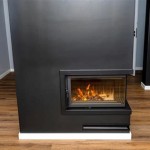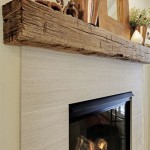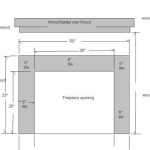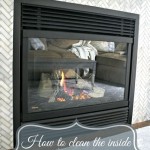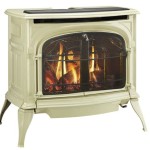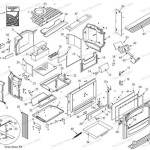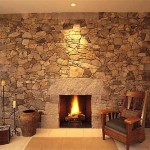Can You Put a Wood Stove Insert in a Prefab Fireplace? A Comprehensive Guide
The question of whether a wood stove insert can be installed in a prefabricated (prefab) fireplace is a common one among homeowners seeking to increase the efficiency and heating capacity of their existing fireplaces. Prefab fireplaces, also known as factory-built or zero-clearance fireplaces, are complete fireplace systems constructed in a factory and then installed in a home. They differ significantly from traditional masonry fireplaces, which are built on-site from bricks and mortar. Understanding these differences is crucial when considering a wood stove insert.
Wood stove inserts are designed to fit inside existing fireplaces, transforming them into more efficient heating appliances. They are enclosed units made of cast iron or steel, with a door, a combustion chamber, and a flue outlet. The purpose of an insert is to capture more of the heat produced by burning wood and radiate it into the room, rather than allowing it to escape up the chimney. This can drastically improve the heating efficiency compared to an open fireplace, which often loses a significant portion of its heat.
However, the compatibility of wood stove inserts with prefab fireplaces is not a straightforward yes or no answer. It depends on various factors, including the design of the prefab fireplace, the specifications of the insert, and adherence to safety regulations. A thorough assessment is necessary to determine if such an installation is feasible and safe.
Understanding the Differences Between Prefab and Masonry Fireplaces
Masonry fireplaces are constructed from brick, stone, or concrete blocks and are built directly into the structure of the home. They have a substantial firebox, chimney, and foundation designed to withstand high temperatures. These fireplaces are generally more robust and can handle higher heat outputs compared to prefab fireplaces. Because of their construction, masonry fireplaces are often more adaptable to retrofitting with wood stove inserts, provided the existing chimney is in good condition and of the correct size.
Prefab fireplaces, on the other hand, are engineered systems designed for specific heat outputs and clearances to combustible materials. They consist of a metal firebox, a metal chimney system, and decorative surrounds. These fireplaces are generally lighter and less expensive to install than masonry fireplaces. However, their design limitations mean that they are not always compatible with wood stove inserts.
The primary concern when considering an insert for a prefab fireplace is the potential for overheating. Prefab fireplaces are designed to handle a certain range of temperatures. Installing a wood stove insert, which can generate significantly higher temperatures than the fireplace was designed for, can lead to a fire hazard. The increased heat can compromise the integrity of the fireplace components, potentially damaging the surrounding structure or leading to a house fire.
Key Considerations Before Installation
Several crucial factors must be evaluated before attempting to install a wood stove insert in a prefab fireplace. Ignoring these considerations can lead to dangerous consequences.
Manufacturer's Specifications: The most important step is to consult the manufacturer's specifications for both the prefab fireplace and the wood stove insert. The fireplace manufacturer's manual will explicitly state whether or not it is approved for use with an insert. If the manual prohibits the use of inserts, attempting to install one is highly discouraged and likely in violation of building codes. Similarly, the insert manufacturer's instructions will specify the types of fireplaces the insert is compatible with. Careful review of both sets of documentation is essential.
Listing and Labeling: Look for a listing label on the prefab fireplace. This label indicates that the fireplace has been tested and certified by a recognized testing laboratory, such as Underwriters Laboratories (UL) or Intertek (ETL). The listing label will specify the approved fuels and any restrictions on modifications or additions, including the use of inserts. If the fireplace is not listed or labeled for use with an insert, installation is not permitted.
Chimney Compatibility: The chimney system of a prefab fireplace is specifically designed to work with the fireplace itself. It is often a lightweight, double-walled metal chimney system. Wood stove inserts require a chimney system that can withstand the higher temperatures and creosote buildup associated with wood burning. In most cases, the existing prefab fireplace chimney will need to be replaced with a new, insulated chimney liner that is specifically designed for wood stove inserts. This liner must be sized appropriately for the insert and installed according to the manufacturer's instructions and local building codes.
The Importance of Professional Installation and Local Codes
Even if the manufacturer's specifications appear to allow for the installation of a wood stove insert, it is crucial to hire a qualified professional to perform the installation. A certified wood stove installer will have the expertise to assess the compatibility of the fireplace and insert, ensure proper installation techniques, and verify compliance with local building codes. Attempting a DIY installation without the necessary knowledge and experience can be extremely dangerous.
Local building codes play a significant role in determining the legality and safety of installing a wood stove insert. These codes typically outline specific requirements for fireplace and chimney installations, including clearances to combustible materials, chimney sizing, and ventilation. Before beginning any installation work, it is essential to obtain the necessary permits from the local building department and ensure that the installation meets all applicable code requirements. Failure to comply with building codes can result in fines, insurance complications, and, most importantly, increased risk of fire.
In many jurisdictions, a building inspector will need to inspect the installation before it can be used. The inspector will verify that the installation meets all code requirements and that the insert is operating safely. This inspection is a crucial step in ensuring the safety of the home and its occupants.
Moreover, consulting with a qualified chimney sweep is highly recommended. A chimney sweep can inspect the existing chimney system (if any parts are to be retained) and advise on its suitability for use with a wood stove insert. They can also clean the chimney and identify any potential problems, such as cracks or blockages, that could affect its performance.
Ultimately, the decision of whether or not to install a wood stove insert in a prefab fireplace should be based on a thorough assessment of all the factors outlined above. It is crucial to prioritize safety and ensure that the installation is performed in accordance with manufacturer's specifications and local building codes. If there is any doubt about the compatibility of the fireplace and insert, or if the manufacturer's specifications prohibit the use of inserts, it is best to err on the side of caution and explore alternative heating options.
Ignoring these guidelines can lead to serious consequences, including fire hazards, structural damage, and potential health risks. A well-informed decision, guided by professional expertise and adherence to safety regulations, is essential for ensuring a safe and efficient heating solution.

Installing Inserts Into Prefab Fireplaces Arlington Tx Black Velvet

New Wood Burning Prefab Fireplaces Complete Fireplace Installs

New Wood Burning Prefab Fireplaces Complete Fireplace Installs

Time To Replace Wood Burning Prefab Fireplace Greenville Sc Blue Sky

Zero Clearance Vs Prefabricated Fireplace Full Service Chimney

Fireplace Installation Full Service Chimney Serving Kansas City Area

Wood Burning Fireplace Inserts Insert Installation

All About Prefabricated Fireplaces Chimney Savers

Wood Burning Fireplace Inserts Sierra Hearth And Home

Before After Hechler S Mainstreet Hearth Home Troy Missouri
Related Posts

